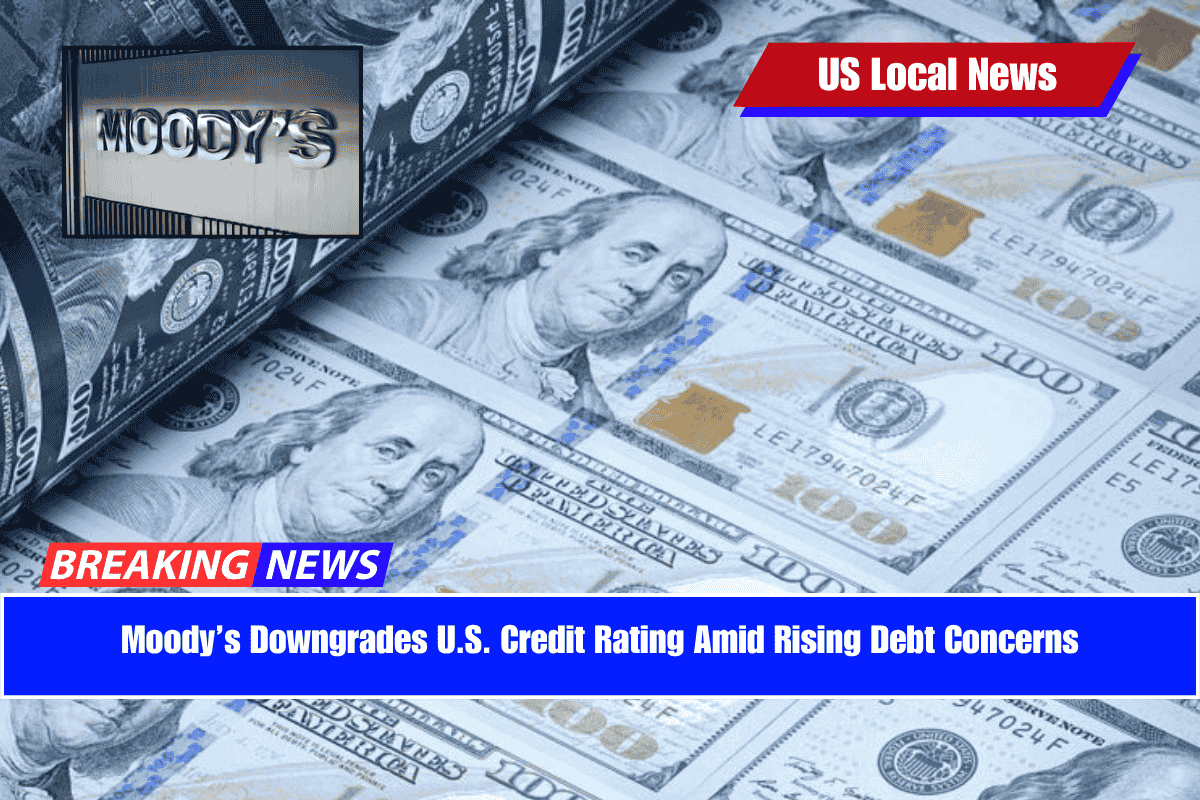Moody’s Ratings, one of the world’s top credit rating agencies, has downgraded the U.S. government’s credit rating from Aaa to Aa1, marking a significant move that leaves the U.S. without a perfect score from any major rating agency.
This downgrade reflects growing worries over America’s rising debt, increasing interest payments, and lack of long-term plans to fix the country’s financial situation.
Why Did Moody’s Lower the Rating?
Moody’s says the U.S. is spending more than it earns, and the country’s debt is growing fast. They blamed both past and current U.S. governments for not agreeing on strong policies to reduce budget deficits and interest costs.
The agency said federal debt levels are now “significantly higher” than other countries with similar credit ratings, and these deficits are only expected to grow. They noted that even recent tax proposals by the Republican Party could add another $4 trillion to the deficit over the next 10 years, without enough cuts in government spending to balance it.
What This Means for U.S. Consumers
Although the downgrade may sound technical, it could eventually affect everyday people. Here’s how:
- Higher borrowing costs: A lower credit rating may cause the U.S. government to pay higher interest on Treasury bonds.
- Impact on loans: Since U.S. Treasury rates influence other financial products like home loans, personal loans, and corporate bonds, Americans might see higher interest rates when borrowing money.
- More federal debt: If borrowing becomes costlier for the government, the national debt may rise even faster, limiting future spending options.
However, experts say the effects may not be felt right away. Investor demand for U.S. bonds remains strong, which is keeping interest rates relatively stable for now.
U.S. Still Has Financial Strengths, Says Moody’s
Despite the downgrade, Moody’s also changed the outlook from negative to stable, meaning they don’t expect another downgrade soon. The agency praised the U.S. for its large and dynamic economy and for having the U.S. dollar as the world’s reserve currency, which gives it financial strength other countries don’t have.
They also noted that the Federal Reserve, which manages U.S. monetary policy, is still seen as effective and independent, helping the country maintain financial stability even during tough times.
Other Agencies Already Downgraded the U.S.
Moody’s was the last major credit rating agency still giving the U.S. a perfect rating. But:
- Standard & Poor’s downgraded the U.S. in 2011.
- Fitch Ratings dropped its rating in 2023.
Now all three of the biggest credit rating agencies have lowered their view of the U.S.’s creditworthiness.
Expert Opinions
Financial expert James Humphries from Mindset Wealth Management said the downgrade is mostly symbolic right now, as there has been no major jump in interest rates. But he warned that if the government keeps spending without reducing debt, it could cause serious financial problems in the long run.











Leave a Reply